While in Senegal to teach a group of women how to make soap, Benjamin and I got to visit a village called Gounoum that produced palm oil. They did everything by hand (no machines).
If you missed my post about making coconut oil, check it out.
They produce the bright red palm oil and also palm kernel oil. We used both in the soap that the women made.
You can only use small quantities of the red palm oil because it turns the soap orange. Most of the palm oil that soap makers use in the U.S. is processed and whitened.
Palm oil is used in many Senegalese dishes including Soupou Kandia (a gumbo style soup in the Casamance) and Thiou Tir (a fish and rice dish with palm oil sauce).
Palm kernel oil is used in white rice and for cooking other things. It is also used for body care.
The women of the village make the palm oil. Benjamin asked one of the women how long the village had been processing palm oil and she didn’t have an answer. They just always had. They also process cashews and one woman even extracts salt from the ocean to sell.
It was nice to see this small-scale traditional process that was truly benefiting the village. Some of the instructions might have been lost in translation, but here is what I understood.
Men and boys climb the palm trees to get the fruit. They shimmy up the trees using leather-type straps to help them climb.
The fruits are piled up. You can just see and feel the oil oozing from them in the hot sun.
The outer shell is removed and you are left with the pulp and the kernel. The pulp is what produces palm oil and the kernel is what produces palm kernel oil.
Making the Palm Kernel Oil
The kernels are thrown into a barrel with boiling water. They are cooked for about 5 hours.
They are then removed from the barrel and the water is strained out.
The kernels are put into a basket and washed with water.
They are now ready to be crushed and the kernel meat is removed.
The kernel meat is then crushed and boiled with water to extract the oil. This mixture is strained. The oil and water is cooked to evaporate out the water, leaving the oil.
Making the Palm Oil
The pulp is put into a bucket with a bit of oil/water from the boiling kernels.
The mixture is mixed and mixed until oil separated out.
The oil is collected and bottled. As far as I could tell, there wasn’t anything else done to it. I think they might boil it to help the process along, but they didn’t do that when we were there during the demonstration.
All along the road leading to the village there were women with stalls selling bright red palm oil.
It was really cool to see the process. It felt like we were witnessing something that had been done for over a hundred years.
Benjamin and I are in Senegal to teach a group of women all about soapmaking. If you’d like to support this project, please sign up for a monthly donation at LovinSoapProject.org! As a THANK YOU, you will receive Soap Collaborative every month. ? Thank you!
Proceeds from purchases at LovinSoap.com go to support Lovin’ Soap Project.
Happy Soaping!
-Amanda Gail





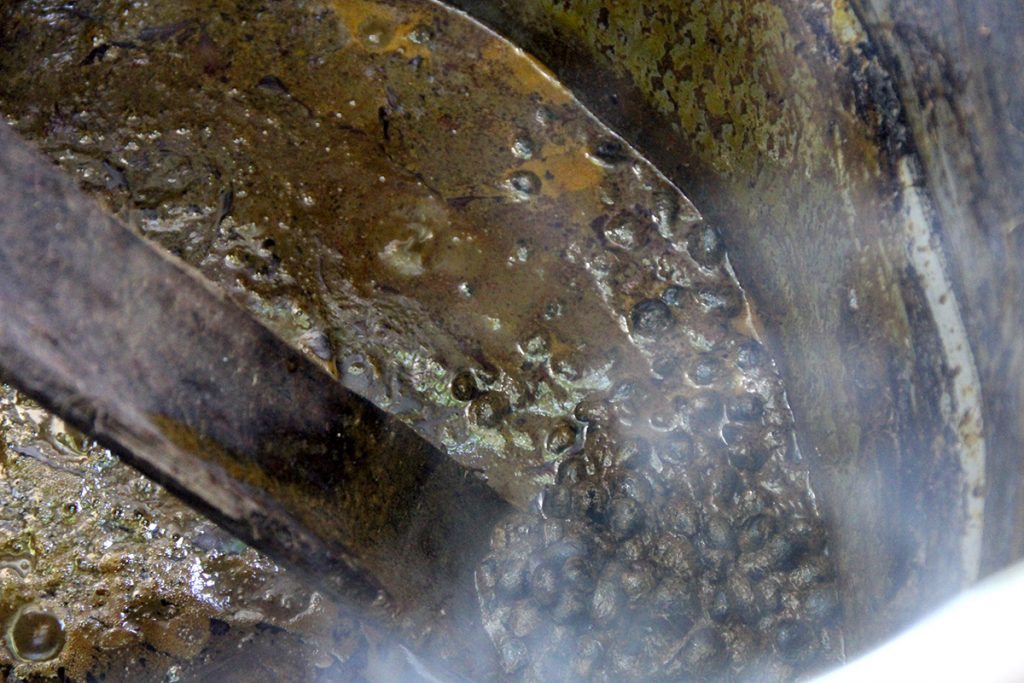

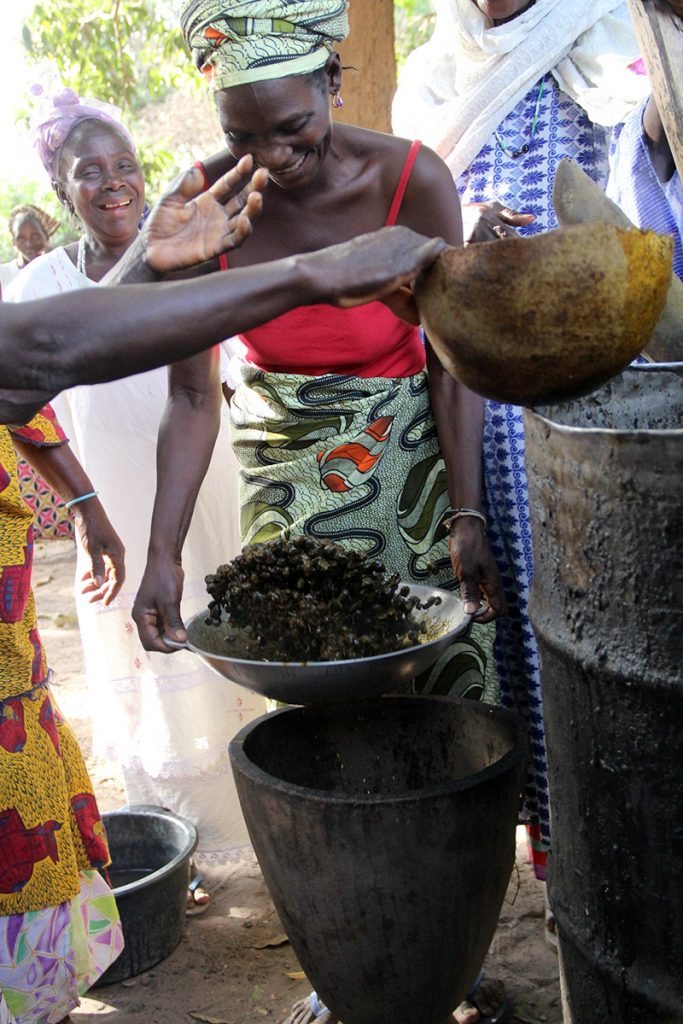
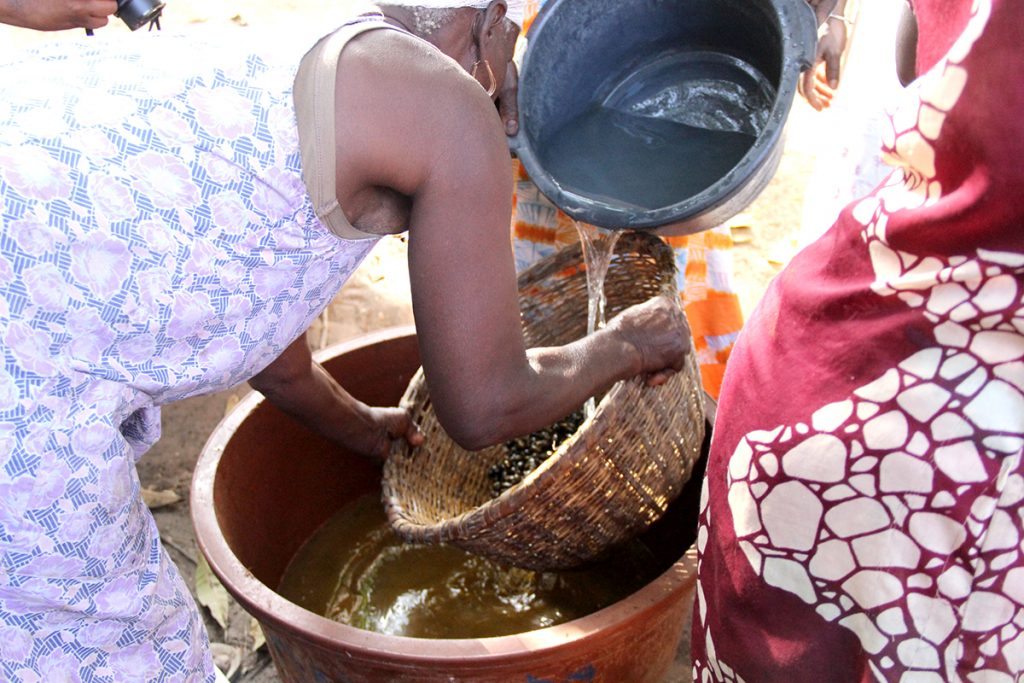
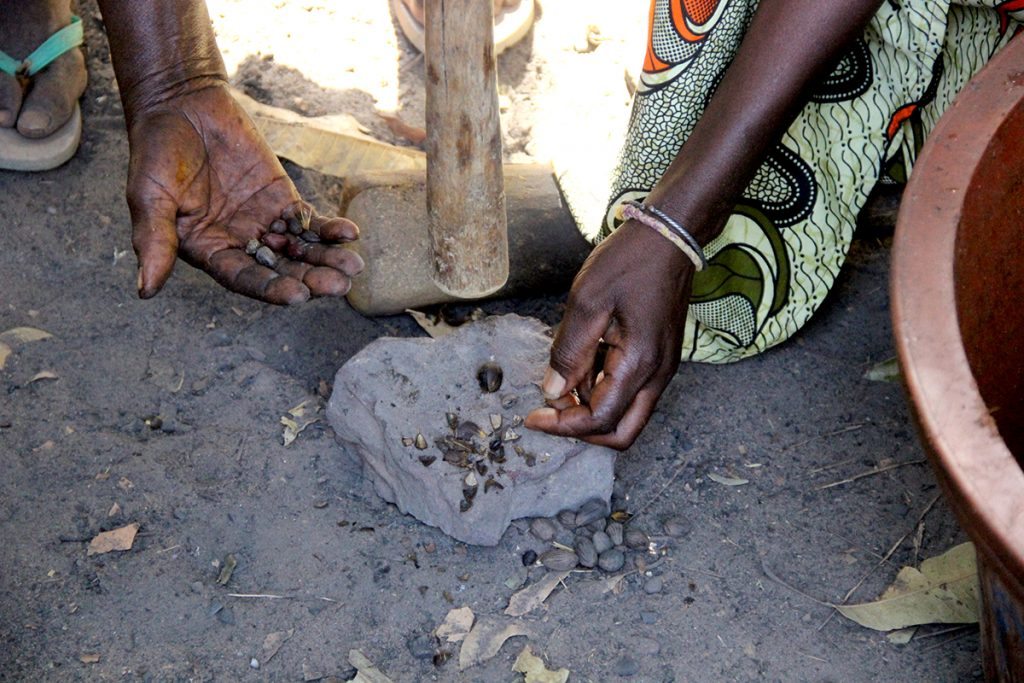
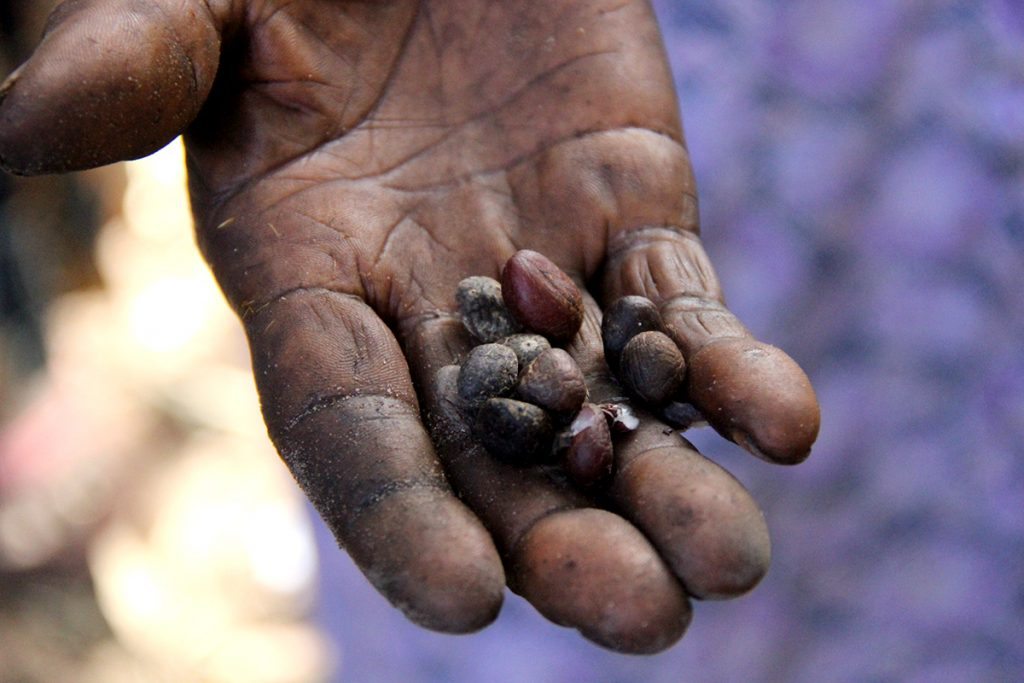
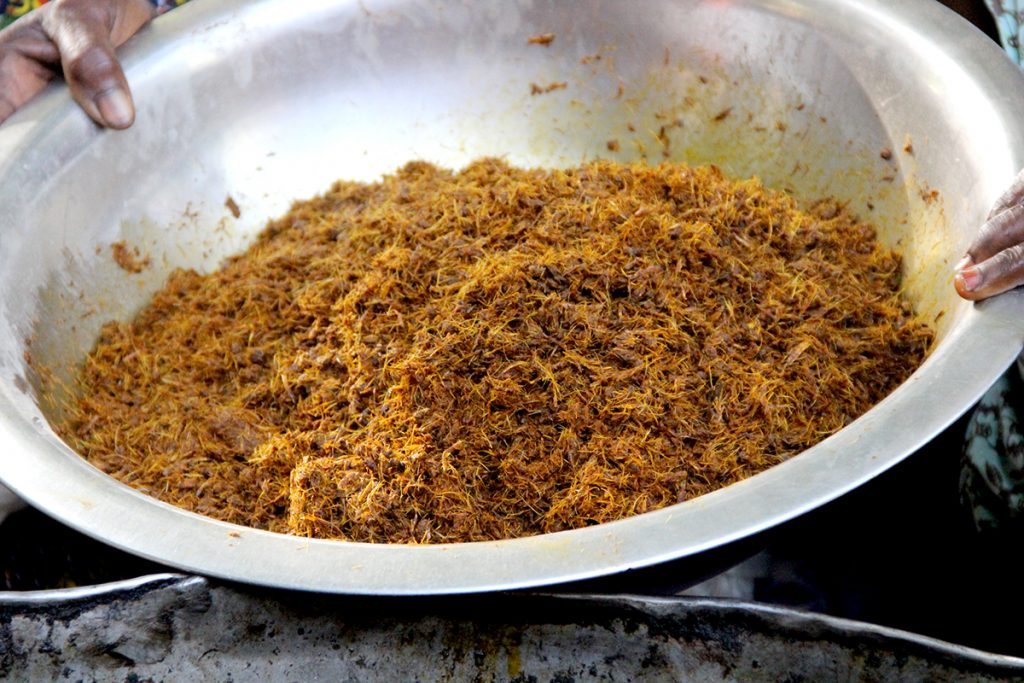
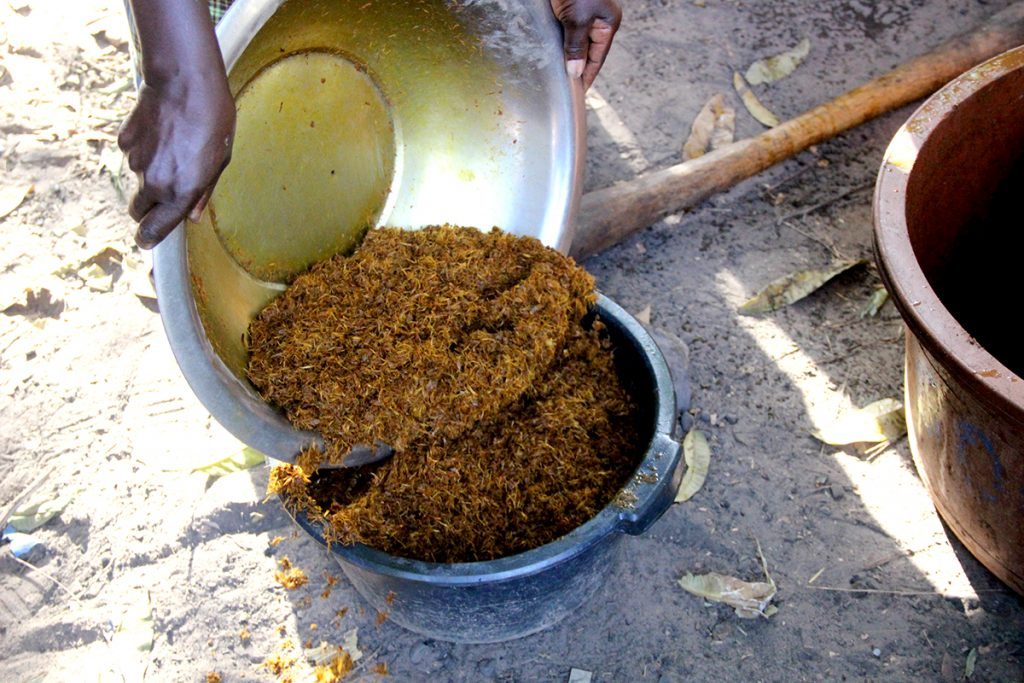
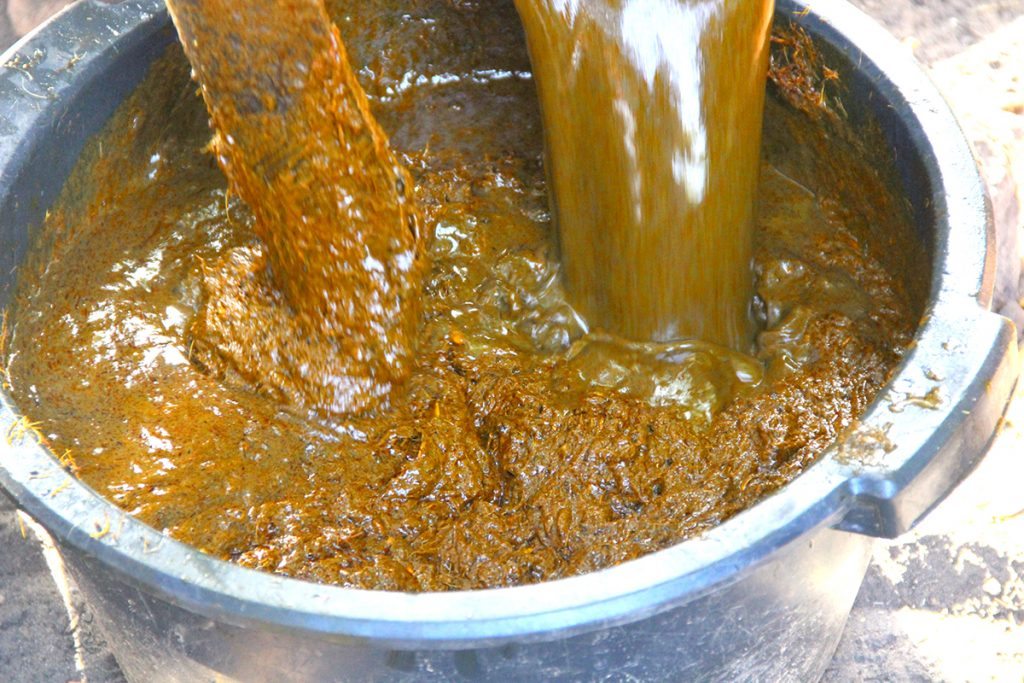
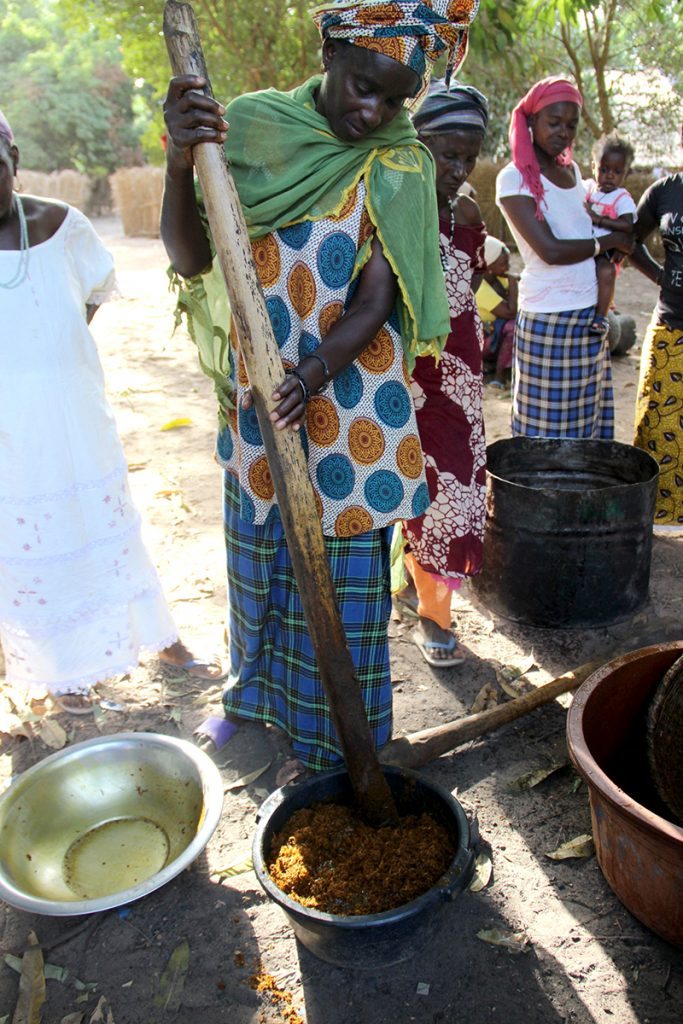

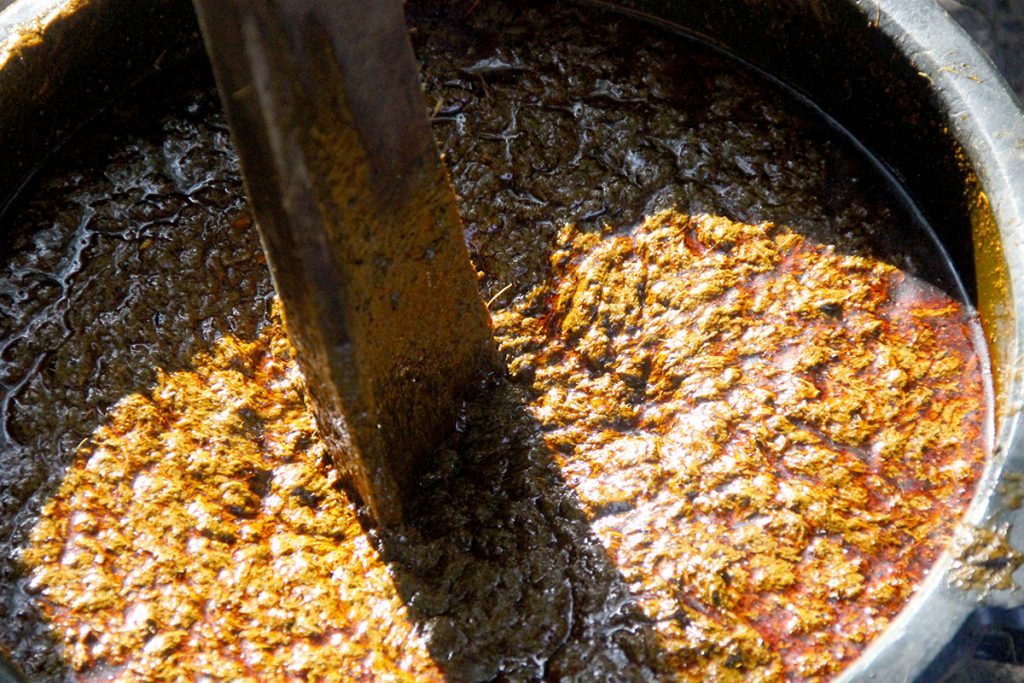

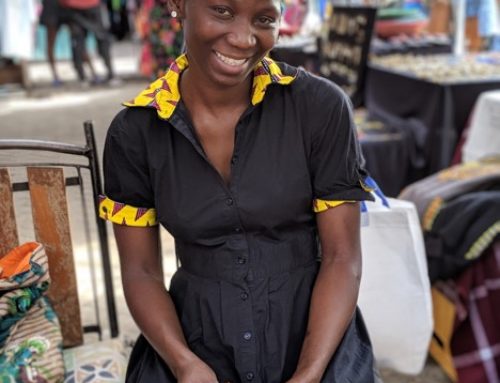
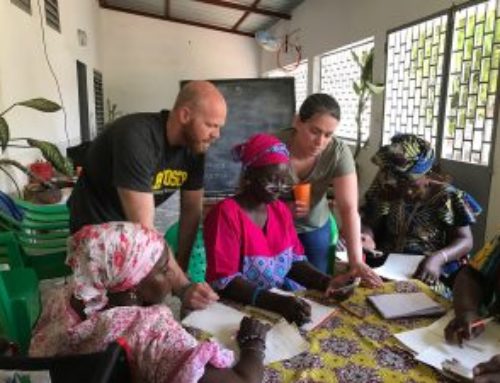

great work………
Wonderful! I am so glad when people visit Africa in general and Senegal in particular and bring out the positive. It doesn’t happen often.
Too cool! Thanks for bringing us along!
Amazing all the work that goes into extracting the oil. It looks like everyone is happy to show you how they do it 🙂 Thanks for sharing it with us!!
Hi..I did purchase 3 ebook through online cart…pls check ..been waiting and cant wait to recieve it. Please Reply. Txs.
Hello! I am looking up your order and emailing you now. 🙂